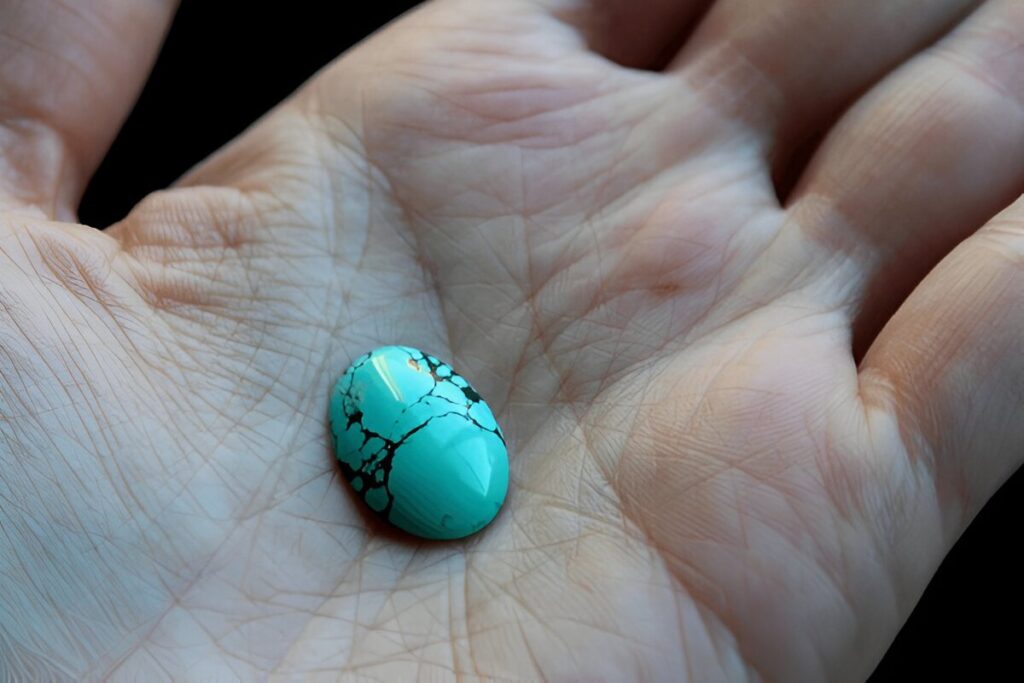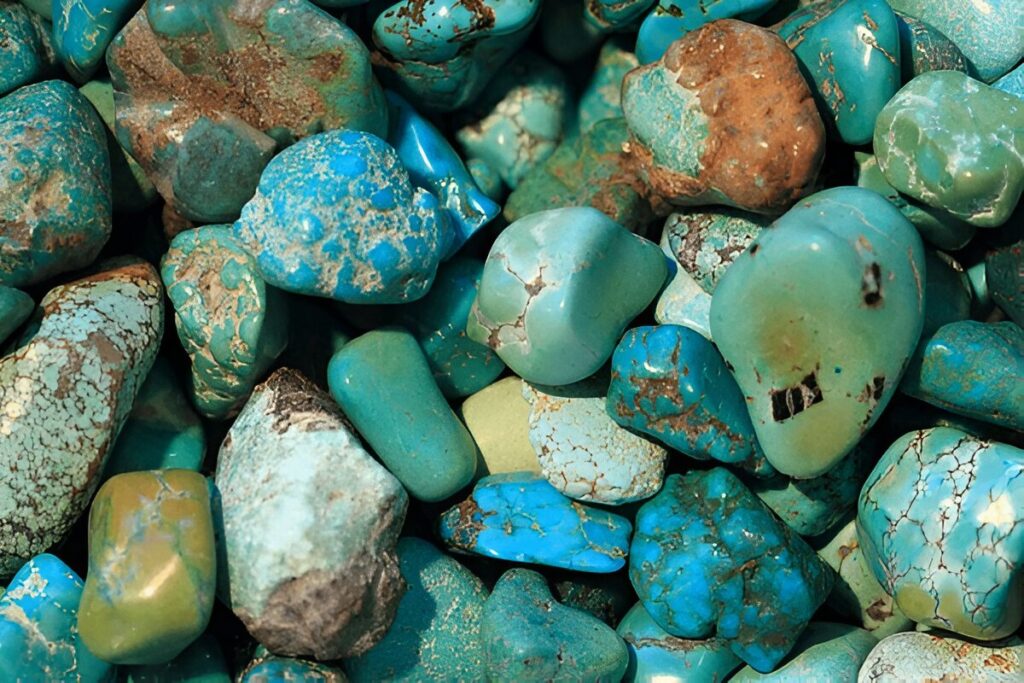Ultimate Guide to Green Turquoise: Nature’s Emerald-Hued Treasure
Have you ever gazed upon a piece of green turquoise and felt an immediate connection to the earth itself? There’s something almost mystical about this particular variety that sets it apart from its more common blue siblings. While most people picture the classic robin’s egg blue, green turquoise offers an entirely different experience, evoking forest depths and ancient wisdom.
It’s not just a pretty stone; it’s a geological marvel with a story spanning millions of years. This comprehensive guide will take you deep into the fascinating world of green turquoise, from its scientific makeup and geographical origins to its cultural significance and market value.
Understanding Green Turquoise: More Than Just a Color
Green turquoise is a beloved mineral with a unique twist. While traditional turquoise gets its blue color from copper, its green counterpart owes its hue to the presence of iron and zinc in its crystal structure. This makes it a distinct variety with its own personality and properties.
The rarity of green turquoise is what makes it so sought after. The iron and zinc must be present in just the right concentrations during its formation. Too little, and you get blue turquoise; too much, and the mineral becomes unstable. It’s this delicate balance that makes genuine green turquoise a collector’s dream.
The Geological Journey: How It Forms in Nature
The formation of green turquoise is a slow-motion dance between chemistry and time, taking place over millions of years in arid regions. The process begins when copper-rich rocks meet phosphate-bearing groundwater. The key difference for green turquoise is that this water must also encounter iron and zinc. When all these elements come together in the right proportions, green turquoise begins to form in fractures and veins.
This explains why it is often found in the upper portions of copper deposits. The subtle variations in color and intensity within a single specimen are a testament to this intricate and lengthy formation process.
Global Origins: Where Nature’s Treasure Calls Home
When it comes to green turquoise, location truly is everything. Only a handful of places on Earth consistently produce gem-quality specimens.
The American Southwest: The Royston mine in Nevada is famous for its distinct matrix patterns. Arizona’s Sleeping Beauty mine also yields rare, sage-hued specimens.
Iran (Persia): Historically, the Neyshabur mines have produced some of the world’s finest green turquoise, known for its deep, intense color and high iron content.
China: Mines in the Hubei and Yunnan provinces have emerged as significant sources, producing colors ranging from pale sage to deep forest green.
Other Locations: Small deposits have also been found in Chile, Mexico, and parts of Africa, expanding our knowledge of where this mineral can form.
Varieties and Classifications: The Spectrum of Beauty
Not all green turquoise is created equal. Its classification involves a range of factors, including color, matrix patterns, and hardness.
Color Classifications: The color spectrum ranges from pale mint green (often with zinc) to deep, forest green (due to high iron content). The darkest varieties are generally the most stable and durable.
Matrix Patterns: The vein-like patterns of other minerals add another layer of complexity. Some specimens have a clean, uniform color, while others feature dramatic spider-web designs or bold, chunky formations.
Hardness Variations: While standard turquoise is a 5-6 on the Mohs scale, green turquoise can vary from 4 to 7, depending on its specific mineral composition. Higher iron content generally increases hardness.
Physical and Chemical Properties: The Science Behind the Beauty
Understanding the science behind green turquoise is essential for proper care. The incorporation of iron and zinc ions affects almost every property of the stone.
Crystal Structure: The presence of iron and zinc creates subtle distortions that help produce the green wavelengths we see.
Specific Gravity & Hardness: Green turquoise is slightly denser than blue turquoise due to the iron content, and its hardness can vary widely.
Porosity & Stability: Iron-rich specimens are often less porous and more stable, while zinc-rich varieties can be more porous and may require stabilization treatments.
Color Stability: The iron content makes it more sensitive to heat and certain chemicals, which can cause color shifts over time.
Identification and Authentication: Separating Real from Fake
Due to its rarity, imitations and treated stones are common. Learning to spot genuine green turquoise is crucial.
Color & Matrix: Look for natural color variations and matrix patterns that are seamlessly integrated with the stone. Fakes often have unnaturally uniform color or an artificial-looking matrix.
Surface Characteristics: Natural green turquoise will have subtle irregularities like tiny pits or undulations. Synthetic materials often feel too smooth or perfect.
Hardness & Weight: A natural stone will feel solid, and its weight will be consistent with its density. Be wary of anything that feels too light or plasticky.
Professional Testing: For valuable pieces, consider a gemological certification to verify authenticity and treatment status.
Cultural and Historical Significance: A Stone of Ancient Wisdom
Green turquoise carries a unique cultural meaning that distinguishes it from its blue counterpart.
Native American Heritage: Tribes like the Navajo and Zuni used green turquoise in ceremonies related to agriculture and healing, viewing it as a symbol of the earth and nature.
Tibetan Spirituality: In Tibet, it represents growth and renewal, often used as prayer beads or worn by monks.
Chinese Artistry: Valued for over 3,000 years, ancient scholars wore green turquoise rings to symbolize wisdom and harmony with natural law.
Market Value & Investment Potential: Understanding the Economics
The market for green turquoise has transformed, and it’s a significant segment for collectors and investors.
Rarity is Key: High-quality green specimens command premium prices due to their low production levels.
Provenance Matters: Stones from famous mines like Royston or historic Persian mines hold premium value.
Treatment Status: Untreated, natural specimens are the most valuable, followed by minimally stabilized pieces.
Rising Demand: Growing appreciation among younger collectors is a positive trend, suggesting continued growth potential.
Jewelry Applications & Care: Showcasing Nature’s Beauty
Green turquoise is versatile for jewelry but requires specific care.
Setting Styles: Softer specimens benefit from protective bezel settings. Harder ones can be set with prongs.
Metal Pairing: Its organic hues work beautifully with both silver and gold. Rose gold creates a particularly stunning contrast.
Care & Maintenance: Avoid harsh chemicals, extreme temperature changes, and direct sunlight. Clean with a soft cloth and mild soap. Store it separately to prevent scratches.
Buying Guide: Making Informed Decisions
A successful purchase requires knowledge, patience, and careful consideration.
Do Your Research: Learn about different mine sources and study authentic pieces.
Vet Your Vendor: Buy from reputable dealers with clear authenticity guarantees.
Set a Budget: Prices vary widely, so know your limit.
Ask Questions: Inquire about treatment status, origin, and any certifications.
The Future of Green Turquoise: Trends and Discoveries
The future is exciting for green turquoise, with new discoveries and advancing technologies. New mining technologies are identifying potential sources, and digital platforms are revolutionizing how collectors discover and trade this unique gem. As global appreciation grows, green turquoise is poised to become an even more sought-after gemstone.
Find More Gemstone Guide Reads….
Reference;
The Complete Manual of Green Turquoise






